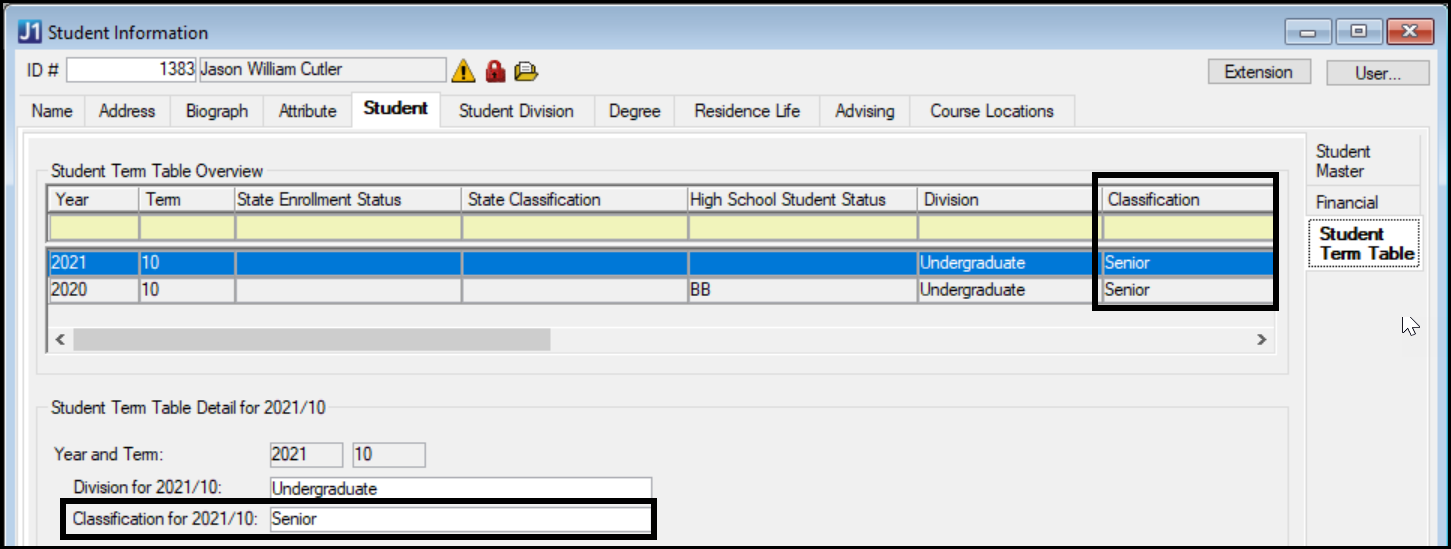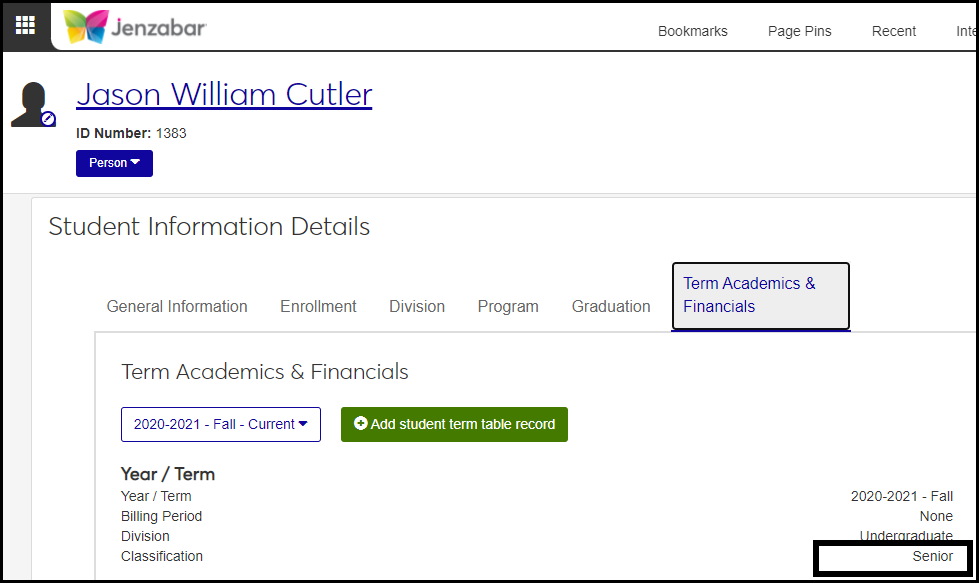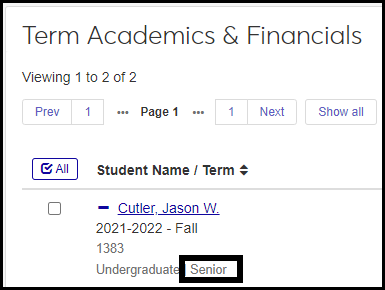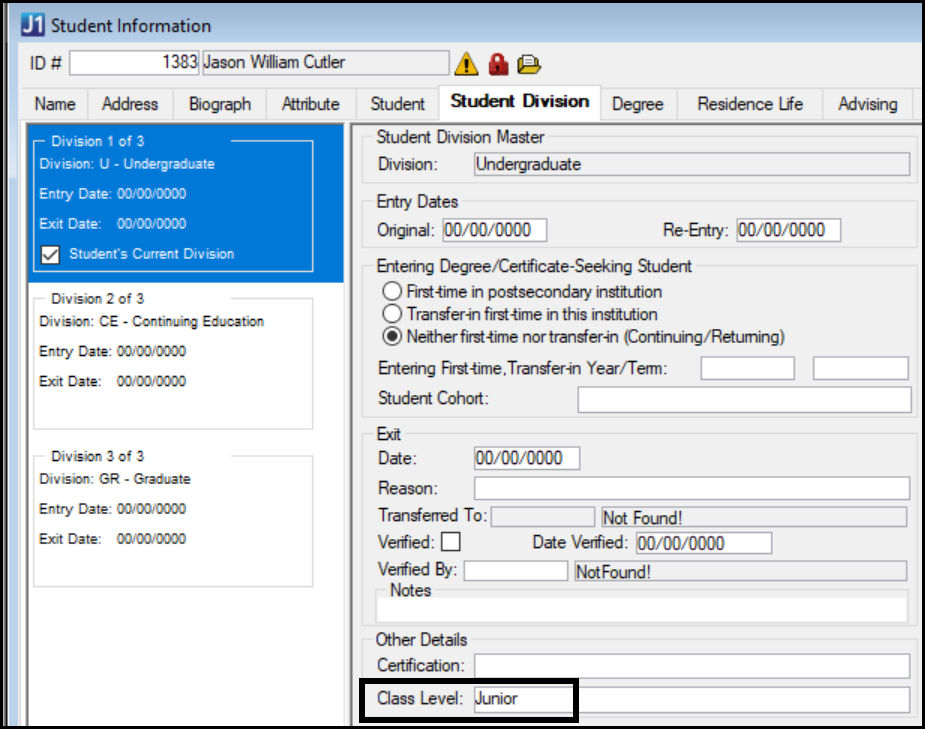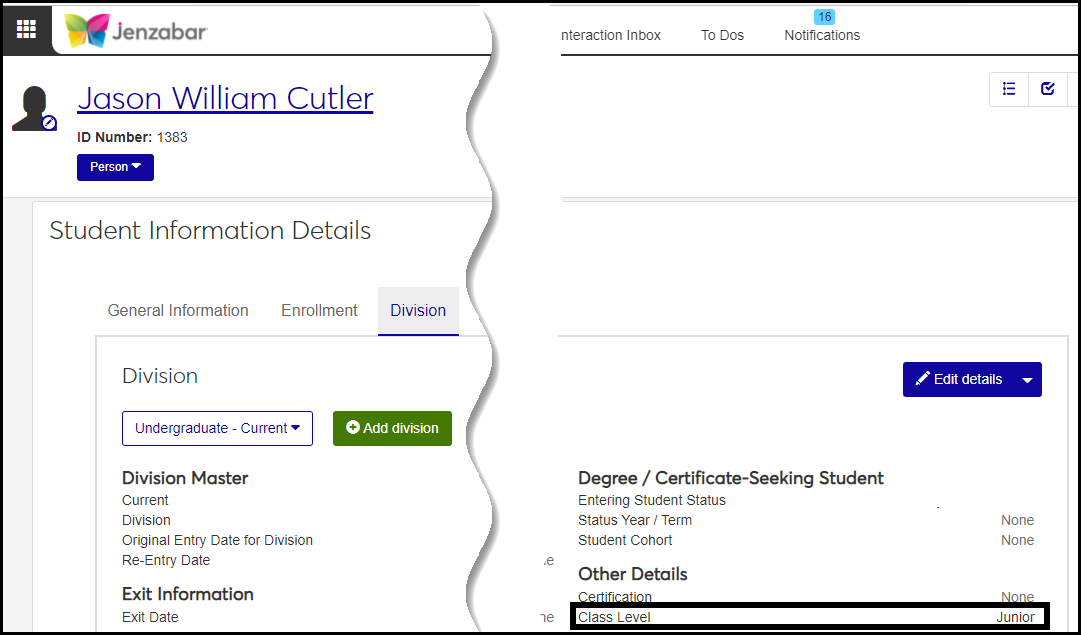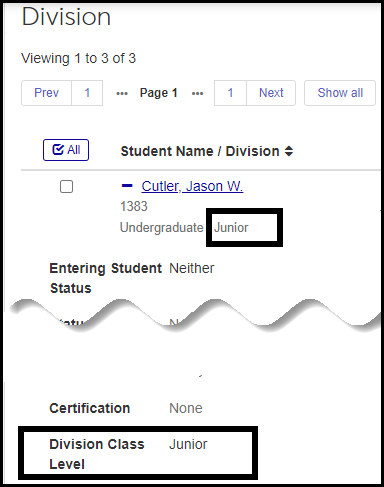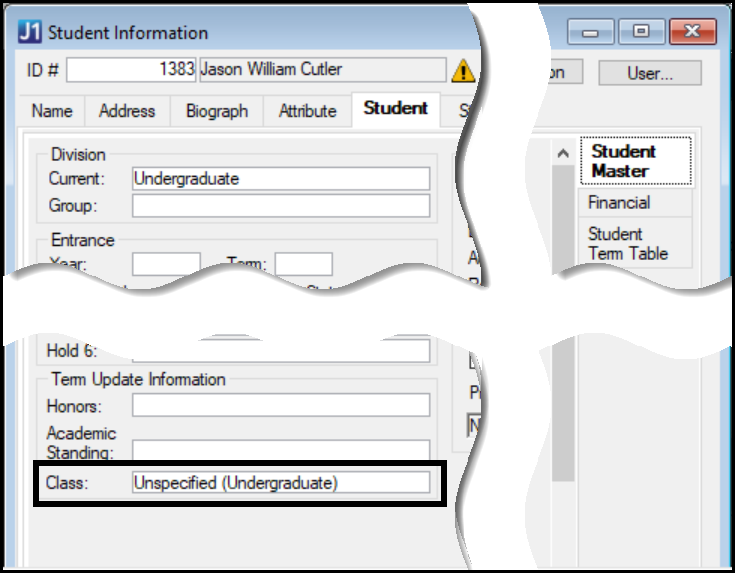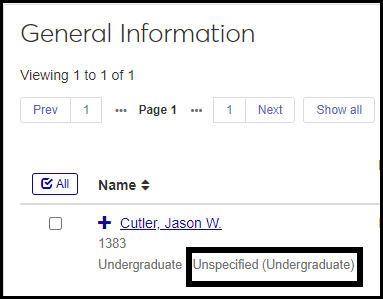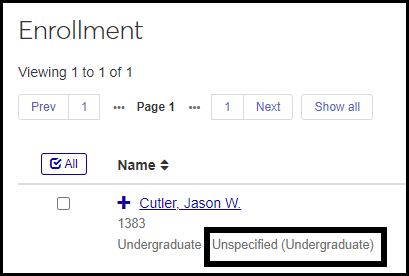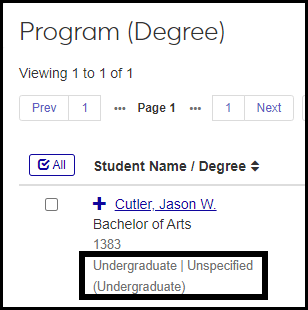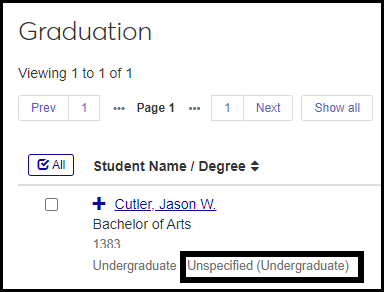Classification Definitions
Important
Information and features vary according to the roles to which you belong and the permissions associated with those roles. For more information, contact your module manager or your campus support team.
Use this page to view, edit, create, or delete, or download classification definitions.
Classifications are designations for students that describe their progress toward a degree. For example, you might have classifications called Freshman, Sophomore, Junior, Senior, Graduate Student, and Nonmatriculated Student. Classifications are important in reports to the National Student Clearinghouse (NSC) and the Integrated Postsecondary Education Data System (IPEDS). As you create the definitions, map each one to an IPEDS Class Code.
Each classification has three fields.
Code is up to 2 alphanumeric characters. It represents your school's abbreviation for a student's level.
The description is up to 30 alphanumeric characters.
IPEDS Class Code is the corresponding value for IPEDS reports: First Year, Second Year, Third Year, Fourth Year, or Unclassified.
Code | Description | IPEDS Class Code |
|---|---|---|
01 | Freshman | First Year |
02 | Sophomore | Second Year |
03 | Junior | Third Year |
04 | Senior | Fourth Year |
GR | Graduate Student | Unclassified |
NM | Nonmatriculated | Unclassified |
Desktop Location
These definitions can also be managed in J1 Desktop on the Classification Definition window.
As students progress through their programs, their classification changes. And if a student has records in more than one division, they could have more than one classification. Therefore, there are several records of classification. Here are the different records, their locations in the database, and their locations in Desktop and J1 Web.
Classification Type | Term by Division |
Table | Student Term Summary by Division |
Column | stud_term_sum_div.class_cde |
Desktop Locations | Student Inquiry window, Summaries tab, Division subtab, Student Term Summary by Division Records data grid, Classification column |
J1 Web Locations | Student Information Details page, Summaries tab, Division subtab, Student Term Summary by Division spreadsheet, Classification column |
Populated by Classification Update Process? | Yes. This is the main field targeted by the Classification Update process. Can also be populated manually. |
Comment | This classification is calculated for each term in a student's career in your school. This is used for reporting, including IPEDS and NSC. |
Classification Type | Term |
Table | Student Term Table |
Column | student_term_table.class_definition_appid |
Desktop Locations | Student Information window, Student tab, Student Term Table subtab, Classification column |
J1 Web Locations |
|
Populated by Classification Update Process? | No. When a new student term table row is created (that is, when a student is enrolled in a new term), this is populated from Student Master (student_master.current_class_cde). (See the Student Master section below for locations in Desktop and J1 Web.) It can also be populated manually. |
Comment |
Classification Type | Division |
Table | Student Division Master |
Column | student_div_mast.class_cde |
Desktop Locations | Student Information window, Student Division tab, Other Details group, Class Level field |
J1 Web Locations |
|
Populated by Classification Update Process? | Optionally, if Student Division Master is selected in the Classification Update process. |
Comment | If a student has multiple divisions, each division has its own classification value. |
Classification Type | Student |
Table | Student Master |
Column | student_master.current_class_cde |
Desktop Locations | Student Information window, Student tab, Student Master subtab, Term Update Information, Class column |
J1 Web Locations |
Registration Operations pages:
|
Populated by Classification Update Process? | Optionally, if Student Master is selected in the Classification Update process. Can also be populated manually. |
Comment | This is the student's classification at the current moment. |
A student's classification is calculated with the Rules Based Update feature in the Desktop app. The criteria are set in the Update Results and Rules window in the Classification Update Rules (CL1). To change the way the classification is calculated, edit the criteria in CL1.
After a term is finished and the grades are recorded, the registrar's office runs the Classification Update process to reclassify students who earned credits enough to advance to the next level. See the "Classification Update" topic.
Updating Classifications
Each term, after grades are in, or when the registrar's office decides, use the Classification Update process to calculate students' classification. This process updates values for the Term by Division type of classification. You have options to have it also update the Division and Student types, but it does not update the Term type. See the Classification Update topic.
Permission to manage classification definitions is available in these roles:
Registrar
Registration Module Manager
The permission required is "Can manage classification definitions".
From the Registration Administration hub, click Hub options.
Click Manage Definitions, and select Classification definitions.
Enter characters, words, or phrases in the Quick Filters to limit the list of definitions.
Click a heading to sort the list by it.
Click the Create definitions button.
The Create Classification Definitions pop-up appears.
In the Code field, enter up to 2 alphanumeric characters. The code should be unique. This is a required field.
In the Description field, enter up to 30 alphanumeric characters. The description should be unique, and it should clearly indicate your school's terminology for classification levels, such as Freshman or First Year.
If the classification corresponds to one of the IPEDS designations (First Year, Second Year, Third Year, or Fourth Year), select it. Otherwise, leave the default value of Unclassified.
Click either Create and close or Create and save another.
Click the Edit icon
 on the row of a definition. The edit pop-up opens.
on the row of a definition. The edit pop-up opens.You can edit the Description by typing or pasting text. The field can contain up to 30 alphanumeric characters.
You can edit the IPEDS Class Code by selecting the drop-down value that maps this classification to the correct IPEDS Class Code.
When you're finished, click Update.
Select the checkboxes next to the rows you want to export.
From the Options drop-down, select Download to Excel. The Download to Excel pop-up opens.
Select options for the Excel format and data columns.
Click Download. Your .xlsx or .zip file is saved in the file location that you have set in your browser settings.
No. State Classification is an alternative classification option if you need to report to the state or another agency classification values that differ from your standard values. It was designed especially for Texas state reporting, but any school can use it. State Classification has its own definition page.

